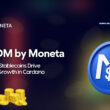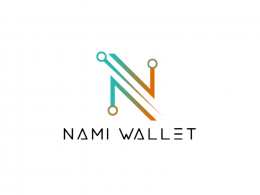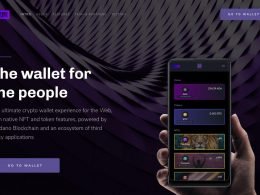Our digital activity is as significant as our activity in the physical world, and currently the relationship between the two is “symbiotic”.
Identity is the set of unique qualities and characteristics, and digital identity is a technological tool for individualization.
Although multiple identities can be created on social media, this does not mean that there are multiple IDs, but rather that they all refer to the same user using different individualization data.
This informality of digital identity is not desirable, since personal identity is unique and unrepeatable. Digital identity is not scarce, but even if there is more than one digital identity for a person, it does not mean that there are more people on the planet.
At the end of this article, I will copy you the link of an analysis that I previously published on AdaPulse.
In Cardano there are no integrations available with well-adapted DId frameworks.
It is necessary to provide the documentation and the integration code to the wider DId community, so that Cardano can be considered as a suitable actor in the ecosystem.
Although decentralized identity is a novel technology, it has been around for years and thankfully many communities agreed that standardization and interoperability is the way to go. W3C DId Working Group and the DIF foundation are making great efforts in that direction and therefore many solutions with real use cases were developed with those concepts in mind.
For Atala PRISM and Cardano to be successful in mass adoption as a DId solution, it needs to be able to integrate with existing frameworks that are currently used in real DId solutions. Two examples of that are the Hyperledger Aries framework used by the Sovrin Foundation, and the DIF Sidetree used for ION on the Bitcoin blockchain.
If Cardano plugins are available for the most common frameworks, DId solution providers and developers will start to consider the Cardano ledger as a valid and excellent option.
In other words, being “out of the box” plus Cardano’s advantages over other blockchains will drive adoption in the short and long term.
The Project
The proposal consists of facilitating the pillars so that the broad DId community can adapt its solutions on the Cardano blockchain with minimal effort, to generate the adoption of identity on the network, as a necessary tool.
This job is divided into two parts.
Part 1: Standardization and documentation
The purpose of this initial phase is to standardize and document how decentralized identity can be used in Cardano, so that anyone interested can clearly understand how it can be implemented. It should also be designed to be read by people outside of the Cardano community, who need to interpret how they can adapt their solutions to the Cardano Blockchain. The style of the document will be similar to what is used in the Cardano Developer Portal in the hope that it can be included there.
If the Atala PRISM implementation code is opened on time, we will take advantage of that information and develop a guide that explains how the DId’s are stored and retrieved from the Cardano blockchain, otherwise, the developer proposes to develop a guide that explains various options. on how to store and retrieve DId from Cardano blockchain.
The scope of the document will include, among others, the following topics:
- DId syntax conventions (ie did: ada: mainnet: {identifier})
- How DIds should be stored, retrieved, updated, and deactivated
- Where DId Documents should be stored
- DId Document conformance (i.e. W3C Decentralized Identifiers v1.0, DIdComm messaging)
- Links to useful tools, guides and examples
Deliverable: Github or web page with hosted document.
Estimated duration: 2 weeks
Part 2: Cardano plugins development
The objective of this phase is to get involved with the existing solutions in the DId ecosystems, and to help integrate them into the Cardano blockchain. Those activities are the main driver for mass adoption around the world, as they will make it easier for the wider community to include the Cardano ledger in their solutions.
These integrations as plugins, not necessarily in the strict sense, but to be seen as an essential piece of software or module that can be easily included in existing frameworks.
The scope of plugin creation is broad, therefore, for the purpose of this proposal, they only focus on three cases, leaving other cases for the next funding rounds.
The complements to be developed in this proposal:
- DIF Universal Resolver https://Github.com/decentralized-identity/universal-resolver
- Hyperledger Aries from the Linux Foundation https://Github.com/hyperledger/aries
- Reference Implementation DIF Sidetree https://Github.com/decentralized-identity/sidetree
The first is the development of a controller following the specifications of the DIF Universal Resolver, which will allow solving the DId stored in the Cardano blockchain.
Deliverable: Github with open source code
Estimated duration: 2 weeks
The second, corresponds to the development of the code necessary to adapt the Hyperledger Aries framework to interact with the Cardano ledger. We will focus on Aries Cloudagent Python (aca-py) and Aries Framework Javascript. We will provide a working sample code that the community will clone, compile, and run.
Deliverable: Github with open source code
Estimated duration: 1 month
For the latter, a Cardano plugin and a snapshot version of the Sidetree reference implementation will be developed that communicate with Cardano’s decentralized ledger, similar to how it did ION for Bitcoin. The code will also include a README.md that explains how to compile and run in a real environment.
Deliverable: Github with open source code
Estimated duration: 1 month
Budget, Schedule and Success Metrics
- Standardization and Documentation: USD 3,500, 2 weeks
- Universal Resolver Driver: USD 3,500, 2 weeks
- Hyperledger Aries Plugin: USD 15,000, 1 month
- Plugin DIF Sidetree: USD 15,000, 1 month
Total: USD 37,000, 3 months
There are four deliverables that constitute the main metric of progress and success:
- Documentation of Part 1
- Part 2a Universal Resolution Controller
- Part 2b Hyperledger Aries
- Part 2c DIF Sidetree Plug-in
ATALA PRISM could include additional code or SDK that overlaps with some of the planned deliverables in this proposal. In that case, that code will not be copied or used as part of the deliverables, and that part of the project may be ignored. That is why the budget and deadlines have been broken down, so that they can be eliminated from the payments and the total duration.
Thus, as a commitment to the transparency of the allocated funds, the developer proposes payments based on the previous deliverables, without the need for advance payments.
The implementation of the project will follow agile management, based on the Jira Cloud tools, in which users can be created for monitoring and auditability.
A biweekly report will be published with the progress of the project, the main milestones and the risk assessment.
For this personal project, the proponent will include an additional developer. The final selection of the developer will be made from well-known developers from Latin America who were part of other projects.
The Team
This proposal was prepared by Rodolfo Miranda. His Linkedin profile can be found at https://www.linkedin.com/in/rodolfomiranda/
His training includes a MS EE degree at Stanford University and more than 25 years of successful work experience both in large multinational companies and in his own startup projects. Its main activities include the architecture, development and implementation of large-scale software solutions for the telecommunications industry. He leads multidisciplinary and multinational teams in the Caribbean and Latin America.
Over 40 years of self-taught programming with advanced knowledge in many coding languages. Lately, he turned to blockchain technologies with an emphasis on the Cardano blockchain.
The proposal in Catalyst.
My previous article on identity: Next Evolution in Blockchain: Decentralized Identity










